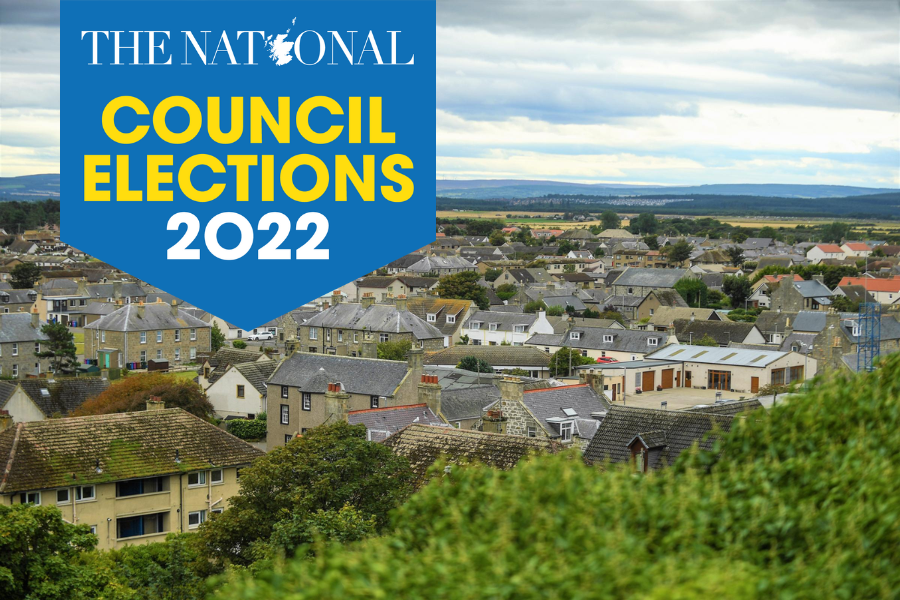
THERE’S only one thing for certain in the Moray council elections: no party will emerge from them with anything like a clear majority.
The SNP, who currently run the administration, have just seven councillors. That is seven short of the number needed for a clean majority on the 26-seat council.
The party returned nine councillors in 2017, but saw one of their number, Amy Taylor, become an independent in 2020, and another, Paula Coy, retire the following year.
The drop in numbers led to an attempted Conservative coup, with group boss Tim Eagle saying he was ready to take on the role of council leader if his colleagues would vote to “recognise the benefit of having a larger group in administration”.
Although SNP figures concede running the council with such a small minority has been “challenging to say the least”, the vote didn’t go as the Tories had hoped. It ended in a 12-12 tie.
This then made national headlines after the deadlock was broken by the cutting of a deck of cards. The Tories drew a seven, the SNP a jack.
For a council that is currently only SNP-run due to blind luck, the outcome of the upcoming elections might offer some form of stability.
But the SNP group is only fielding nine candidates, meaning the best result the party can hope for is to match its 2017 result. Given that the Tories formed an administration after those last elections, that is likely not something the SNP want to repeat.
The Scottish Tories are fielding more candidates (11 in total) and might fancy their own chances of forming an administration. However, the previous Tory-independent coalition lasted barely a year before eight of the Conservatives walked out, leaving the council in chaos and creating the power vacuum which the SNP group would eventually fill.
Moray looks set to continue being split down similar lines. With both the Tories and the SNP open to coalitions with anyone but each other, power may lie in the hands of the smaller parties and independents.
“It’s very polarised in Moray,” Graham Leadbitter, the SNP group and current council leader, tells The National. He says the high level of vote in the area for both the SNP and the Tories suggests that both parties will likely return at least one councillor in each of Moray’s eight wards.
“We want to hammer the Tories as best we can,” he adds. “But the vote is very close.”
Douglas Ross, the Scottish Tory leader and regional MP, has a majority of just 500 votes in his Westminster constituency. The Brexit issue also had Moray split down the middle. It was the narrowest Remain vote in Scotland, with Leave narrowly losing out by 50.1% to 49.9%, just more than 100 votes.
Brexit, like partygate and the cost of living crisis, are national issues which are having a notable impact on people in Moray.
“That would be the difference I think from 2017,” says the SNP’s Shona Morrison, the first female convener in Moray Council’s history. “Questions then had more of a local flavour, but this time there’s large, national bones of contention that people want to discuss.”
Leadbitter, with whom Morrison formerly co-lead the SNP group, says Brexit has reared its head again in Moray due to the failures of the UK shared prosperity fund to match EU receipts.
The Tory government broke a manifesto pledge in failing to match the £1.5 billion annual fund with Treasury cash, instead only coughing up £400 million this year.
“The Highlands and Islands area – which includes Moray – will lose about a third of the funding that they would have had as part of the EU,” Leadbitter says. “This is not insignificant, this is millions of pounds every year.”
But despite the national issues, the divided vote means the SNP and the Tories are guaranteed seats on the council (along with the LibDems they have each already returned one in the uncontested Buckie ward). Meanwhile, the Scottish Greens are eyeing up what could be a crucial breakthrough.
Their best shot could come in the form of Draeyk van der Horn, the party’s candidate in Forres. That ward saw the Greens just miss out on the fourth seat in 2017, and van der Horn hopes to go one better this time around.
While some in the area think the van der Horn may have shot his party’s hopes in the foot after missing hustings – “it didn’t go unnoticed” – the Greens say he has been connecting with locals in other ways.
He says: “Before you start charging in saying I want to do this, this and this, it takes quite a bit of time just listening, of finding out what is so in the area.
“There’s two other [Green] candidates in Moray, and it would be great if all three of us were elected, but to my mind what’s really important is how you go about being in the council in the spirit of cooperation and collaboration.”
With a coalition, or at least working agreements, looking a necessity for any party which hopes to control Moray council after May 5, van der Horn probably has a point.
Scotland’s ballots will be cast in the local elections on May 5. Between now and polling day, The National will profile EVERY ONE of the country’s 32 local authorities. Click HERE to see all of those published so far.







